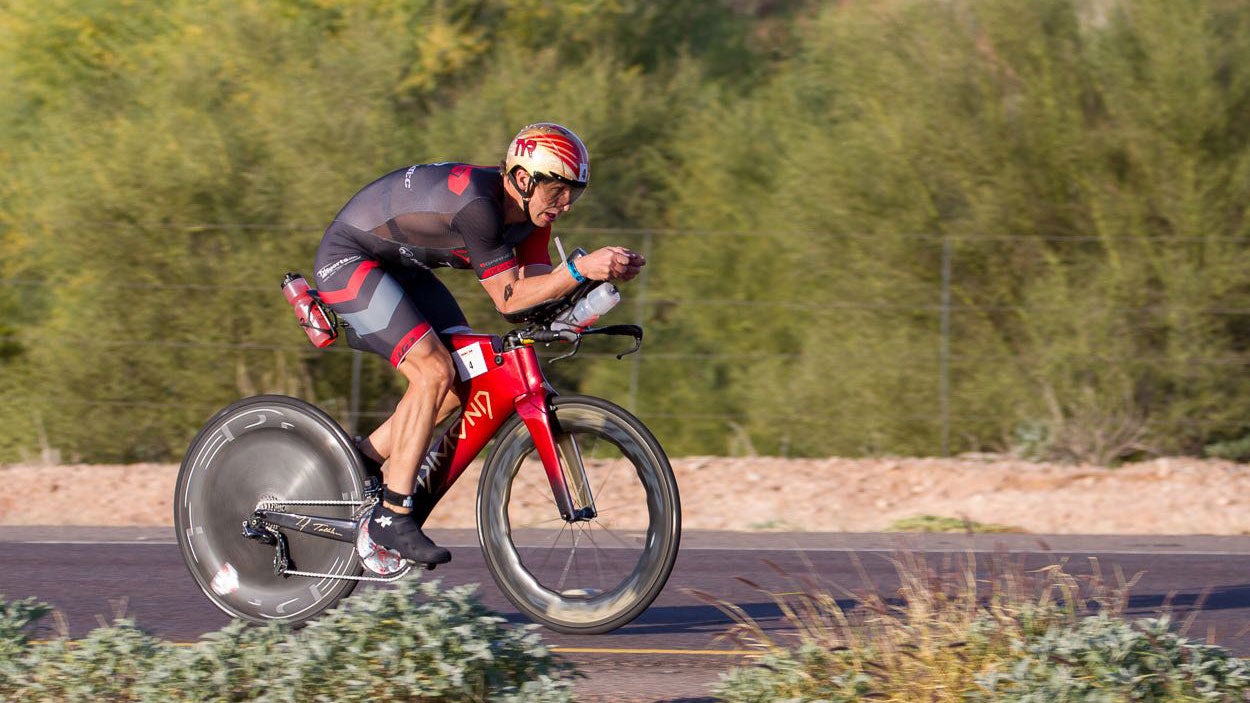The Long, Slow History of Building a Rideable Beam Bike

When Softride first conceived of the beam bike in 1989, their primary focus was building a bike with the plushest ride on earth (hence the name). Softride’s suspension beam flexed with the road to reduce vibration, and—in theory— muscle fatigue. But this came at a cost: The ride was “smooshy.” Dampening road vibration is great, but it meant too much flexibility and power loss, especially going uphill.
While Softride was designing beams as a suspension system in Bellingham, Washington, Zipp began designing a beam bike of its own 1,800 miles away in Indianapolis. Unlike Softride, Zipp’s primary focus was speed. Zipp’s wind-tunnel designed bike, the “2001,” claimed to be the fastest frame ever built, and it didn’t take long for triathletes to take notice.
“I got my first Zipp frame 11 days before Kona in 1991,” says Greg Welch, who went on to finish second that year before winning the Ironman World Championship in 1994 on a Softride. “It was the thickest frame out there, so sometimes you paid for it in the crosswinds, but there was no question it was faster in a straight line. It wasn’t so much about the ride quality, as is it was that it just felt noticeably faster.”
Collectively, the new non-standard shapes were known as non-double-diamond (NDD)—due to their lack of a diamond shape formed by the seatstay, chainstay, and seat tube, and a lack of a diamond formed by the downtube, top tube, and seat tube.
The UCI—cycling’s governing body—deemed non-double-diamond frames illegal. Even then, non-UCI-legal frames were perfectly legal in tri —and NDD frames weren’t explicitly banned by the UCI until 1999. Yet most manufacturers didn’t find it financially feasible to build and design molds for a tri-specific frame when they were already investing so much on UCI-legal time-trial frames. Aside from niche brands like Softride (which ceased production in 2007) and Titan-Flex, the beam-bike revolution lay dormant for nearly two decades. That was until brands like Dimond and Cervélo began applying new carbon molding technologies to design beam bikes that rode and fit like traditional double-diamond frames.
“Cervélo used a process called topology optimization, which allowed them to input extra stiffness into key areas of the bike, like the head tube, bottom bracket, and rear wheel,” says Mat Steinmetz, of 51 Speedshop, who worked as the director of Human-Bike Interaction on Cervélo’s NDD P5X project. “By stiffening up those areas and duplicating the steering geometry from their traditional frames, we were able to make the handling and ride feel the same as a traditional bike.”
Today you can expect any of the best beam or NDD bikes to ride very much like the double-diamond frame you’re probably used to. Most riders might not notice any significant decrease in road vibration because of the lack of a downtube or seatstays. In a straight line, a new-age beam bike will feel very much the same as any other superbike. The big difference comes in handling corners, because the weight is displaced to different areas of the frame, and it can vary widely based on which NDD frame you’re riding. Not to mention many of these bikes are one to four pounds heavier than traditional frames (weight weenies beware).
It’s safe to say that beam bikes are finally here to stay in triathlon, especially at the highest level of the sport. When done right, the design is unquestionably faster than even the best UCI-compliant TT frames. For those who are racing against the clock for a paycheck or aiming for a coveted Kona slot, it’s hard not to choose a frame that’ll save a few minutes.
Will they ever be standard in triathlon? Probably not. Rideability and adjustability are still the primary concerns for 80% of triathletes, and double-diamond frames can be plenty fast. If they’re good enough for the likes of Jan Frodeno, Anne Haug, and Daniela Ryf, then they’re still probably good enough for the rest of us.
Featured image by Nick Morales.